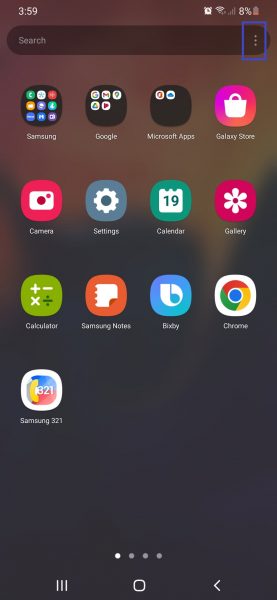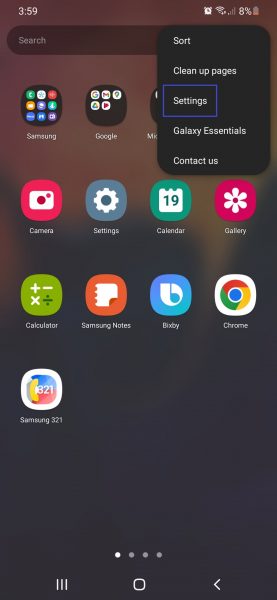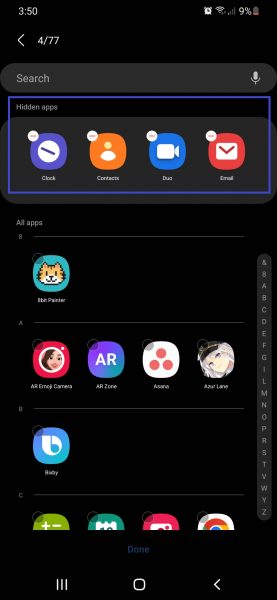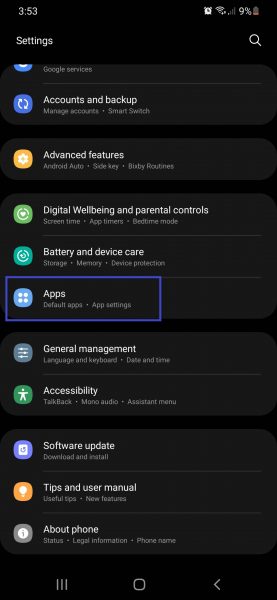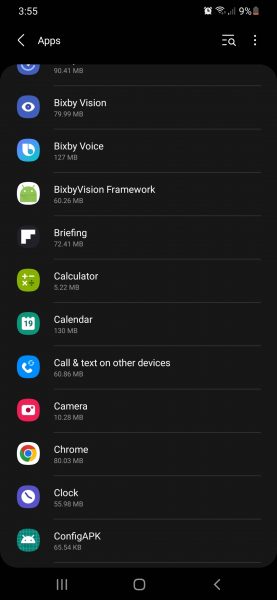The act of hiding apps on smartphones is becoming increasingly popular among kids and teenagers. It’s an activity that gives them the freedom to do whatever they want on the internet without other people snooping around their phones. Through it, they can access violent or pornographic content and download potentially dangerous apps with the knowledge that you won’t be able to catch them — or so they thought.
If you have a child in your home, you may start wondering how much you know about their online behavior. Hence, in this article, we’re going to discuss how to find hidden apps on Android devices, including some tips to determine if your kid or spouse has hidden apps on their phone.
Inside This Article
- Understanding Folders and Screens on Android Phones
- How to Find Hidden Apps on Android: A Step by Step Guide
- Disguise Apps to Take Note Of
- Signs Your Kid’s or Spouse’s Phone Has Hidden Apps
Understanding Folders and Screens on Android Phones

If you’re an Android user, you’re probably familiar with the operating system’s interface and folders. After all, these are the things you immediately see when powering phones on right off the bat. Android phones feature a home screen that contains all of your apps and widgets. This home screen extends horizontally beyond what you see when you unlock the phone. All you have to do is to swipe left and right to reveal other parts of it. You can sort apps and other widgets into groups in order to hide them from other people.
Aside from the home screen, you can also view all of the applications installed on the phone by launching the “app drawer.” The app drawer is a series of screens that houses your apps’ icons. Most of the time, these icons are sorted in an alphabetical or “recently added” manner. For Android devices, the app drawer is far different from the home screen since the latter only caters to some of your installed apps, particularly to your favorites.
To launch the app drawer, simply swipe up from the bottom of the home screen or tap on the app drawer icon (small circle with six dots) located at the bottom center of the home screen.
Hiding apps on both the home screen and app drawer is fairly easy. All it takes is to create a folder and put the apps you want to hide inside of it. From the bird’s eye view, it would look like a collection of app icons. You can rename it to your liking as well. That’s why when you’re trying to figure out how to find hidden apps on Android devices, it’s important to check every nook and cranny of every folder because you’ll never know what’s lurking behind.
How to Find Hidden Apps on Android: A Step-by-Step Guide
Now, here’s a comprehensive guide on how to find hidden apps on Android devices:
Method 1: How to Find Hidden Android Apps in the App Drawer
Because you’re already familiar with Android’s screens and folders, let’s start looking for hidden apps in the app drawer:
- Launch the app drawer by either swiping from bottom to up or clicking on the circle with six dots in the bottom-middle portion of your home screen.
- Tap the three dots in the top-right corner of the app drawer, next to the search bar.

Photo from Cellular News - From the pop-up menu, find Settings and tap it.

Photo from Cellular News - From there, scroll down and tap on the Hide apps tab.

Photo from Cellular News - The screen that lets you hide apps will flash. On top of it, you’ll find the Hidden apps tab that contains all the apps hidden by the phone’s user.

Photo from Cellular News
Method 2: How to Find Hidden Apps on Android via Default Phone Settings
One way to find hidden apps on Android devices is by going through the phone’s default settings. Many Android phones come with built-in hiding software, such as the Secure Folder. This feature allows every Android user to store all media, apps, and data and protect it using a defense-grade security platform. When this happens, it can be a little hard to detect the hidden apps since they no longer appear in the home screen and apps drawer.
Despite this, there’s still a way how to find hidden apps on the Android phone. Here’s a step-by-step guide on how to do so through the phone’s settings:
- From your phone’s home screen, swipe up to reveal the app drawer.
- Tap on Settings.
- Scroll down and find the Apps option then tap it.

Photo from Cellular News - From there, you’ll see the list of installed applications, including the hidden ones.

Photo from Cellular News
Method 3: How to Find Hidden Apps on Android via Third-Party App
Another way how to find hidden apps on Android phones is by using third-party software such as Titanium Backup. However, for this method, your smartphone must be rooted for the app to work properly.
Here’s a word of caution before you proceed: rooting allows for more device modifications, but it may make the gadget perform poorly or compromise the device’s security. Thus, the method can be considered extreme when you simply want to see hidden apps. You also have to make the extra effort to unroot the Android device if you don’t want your action to be discovered.
If you still want to try the method, refer to this step-by-step guide on how to use Titanium Backup:
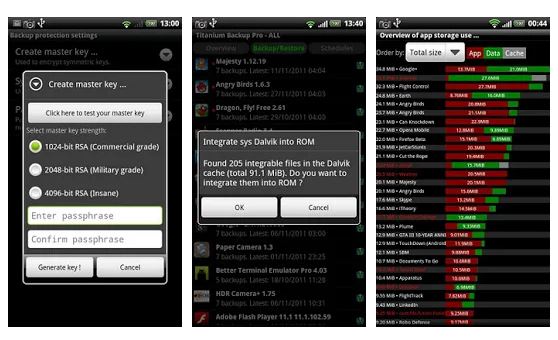
- Make sure that your device is properly rooted by installing and running it through a root checker.
- Download and install Titanium Backup from Google Play Store or from any of your trusted app stores.
- After installing, just launch the app and it will automatically show hidden apps and processes on the Android device.
Disguise Apps to Take Note Of
Knowing how to find hidden apps on Android devices is fairly easy, as long as you’re familiar with the system’s basic features. However, you can also find a variety of app disguisers on the Google Play Store, and most of them are free to download. Here are some of the apps that you need to keep in mind when scanning through your kid’s or spouse’s smartphone:
- Best Secret Folder
- Secret Calculator
- CoverMe
- SmartHide Calculator App
- Vaulty
- KeepSafe
- Galley Vault
- AppLock
- Hide It Pro
Signs Your Kid’s or Spouse’s Phone Has Hidden Apps
Besides familiarizing yourself with disguise apps, it’s helpful to know the behavioral cues for identifying that someone could be hiding something on their gadget. Thus, here are some signs that your kid (or spouse) has hidden apps on their phone and is trying their best to shun them away from you:
1. Turning Off the Phone or Hiding the Screen

The number one sign that your kid or spouse is hiding their online activities from you is when they power off the device or hide the screen as you enter the room or come within their proximity.
2. Always Carrying the Phone Around
Another sign to spot is when your kid or spouse constantly brings the phone wherever they go — even in the toilet. They make sure that the device is always within their grasp, even when the phone is charging on top of the table.
3. Refusing to Give Out Passwords

One good way to test if your kid or spouse has hidden apps is to borrow their phone. More often than not, phones that contain hidden apps require a password to unlock the menu. If they refuse to hand over the password or even let you look through the device, then you’ll know something is up.
4. Having Multiple Apps of the Same Type
If your kid or spouse lends you the phone and you suddenly see two apps of the same kind, then that should tell you something. Multiple apps, such as two calculators, may entail that the other one is a vault that hides apps and media from other people’s eyes. If you want to verify, try launching these apps and you might see the difference between the two. A phone’s built-in calculator automatically loads up without showing any logo or information. A fake one, on the other hand, takes up a few seconds to load and may flash a logo of some company before it redirects you to the actual calculator.
Hidden apps or vaults usually follow the operation it advertises. So, when someone opens the phone and accesses the app, they’ll never doubt it. It’s only when you enter the secret code that you’ll see the hidden apps or media.
Wrap-Up
Hiding apps on Android is possible, but it doesn’t mean finding the apps is impossible. Third-party apps and even the phone settings interface itself could be used to reveal what’s hidden. Of course, that’s as long as you can still get access to the phone.
Now that you know how to reveal hidden apps on Android, you might want to learn how to delete hidden apps on iPhones next.

